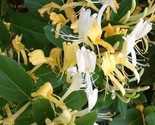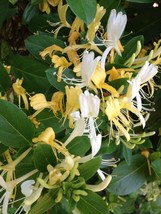Rendered at 19:58:12 05/02/25
Lonicera Honeysuckle Starter Plant
$19.97
Shipping options
Estimated to arrive by Fri, May 16th.
Details
$10.75 via Standard shipping (1 to 5 business days) to United States
Return policy
None: All purchases final
Details
Purchase protection
Catalog info
Payment options
PayPal accepted
PayPal Credit accepted
Venmo accepted
PayPal, MasterCard, Visa, Discover, and American Express accepted
Maestro accepted
Amazon Pay accepted
Nuvei accepted
Shipping options
Estimated to arrive by Fri, May 16th.
Details
$10.75 via Standard shipping (1 to 5 business days) to United States
Return policy
None: All purchases final
Details
Purchase protection
Catalog info
Payment options
PayPal accepted
PayPal Credit accepted
Venmo accepted
PayPal, MasterCard, Visa, Discover, and American Express accepted
Maestro accepted
Amazon Pay accepted
Nuvei accepted
Item traits
| Category: | |
|---|---|
| Quantity Available: |
5 in stock |
| Condition: |
New |
| UPC: |
6099651873822 |
| MPN: |
06099651873822 |
| Brand: |
Syukur |
Listing details
| Seller policies: | |
|---|---|
| Shipping discount: |
No combined shipping offered |
| Price discount: |
3% off w/ $50.00 spent |
| Posted for sale: |
More than a week ago |
| Item number: |
1640009190 |
Item description
Lonicera, commonly known as honeysuckle, is a diverse genus of flowering plants belonging to the Caprifoliaceae family. Honeysuckles are known for their sweetly fragrant, tubular flowers that come in a variety of colors including white, yellow, pink, and red. These flowers are often followed by small, bright red or black berries. Honeysuckles can be found as both shrubs and climbers, making them versatile for various garden settings.
Care Instructions:
Light Requirements: Honeysuckle thrives best in full sun to partial shade. While they can tolerate some shade, full sun encourages the best flowering and growth.
Soil: They prefer well-drained soil but are quite adaptable to different soil types, including sandy, loamy, and clay soils. Adding organic matter can improve soil structure and fertility.
Watering: Regular watering is essential, especially during dry spells. Newly planted honeysuckle requires consistent moisture until established. Once established, they are fairly drought-tolerant but benefit from occasional deep watering.
Fertilization: Fertilize in early spring with a balanced, slow-release fertilizer to promote healthy growth and abundant blooms. Avoid excessive nitrogen as it can lead to more foliage at the expense of flowers.
Pruning: Prune honeysuckle to control its shape and size, and to encourage new growth. Climbing varieties should be pruned immediately after flowering to avoid cutting off next year's blooms. Shrubby varieties can be pruned in late winter or early spring.
Support for Climbers:
Provide a sturdy support structure, such as a trellis, arbor, or fence, for climbing honeysuckle varieties. They can quickly cover structures, creating a beautiful, fragrant display.
USDA Hardiness Zones:
Honeysuckle is hardy in USDA zones 4-9, with some variations depending on the specific species and cultivar. This range means it can tolerate a variety of climates, from cooler northern regions to warmer southern areas.
Additional Information:
Pollinator Attraction: Honeysuckles are excellent for attracting pollinators such as bees, butterflies, and hummingbirds, thanks to their nectar-rich flowers.
Invasive Potential: Some species, particularly Lonicera japonica (Japanese honeysuckle), can be invasive in certain regions. It's important to choose non-invasive varieties or manage growth to prevent spreading into natural areas.
Common Species:
Lonicera japonica: Japanese honeysuckle, an invasive species in some areas.
Lonicera periclymenum: Common honeysuckle, also known as European honeysuckle.
Lonicera sempervirens: Trumpet honeysuckle, a native North American species known for its bright red flowers.
(description exceeds maximum possible length)
Added to your wish list!

- Lonicera Honeysuckle Starter Plant
- 5 in stock
- Handling time 7 days. Estimated delivery: Fri, May 16th
Get an item reminder
We'll email you a link to your item now and follow up with a single reminder (if you'd like one). That's it! No spam, no hassle.
Already have an account?
Log in and add this item to your wish list.









